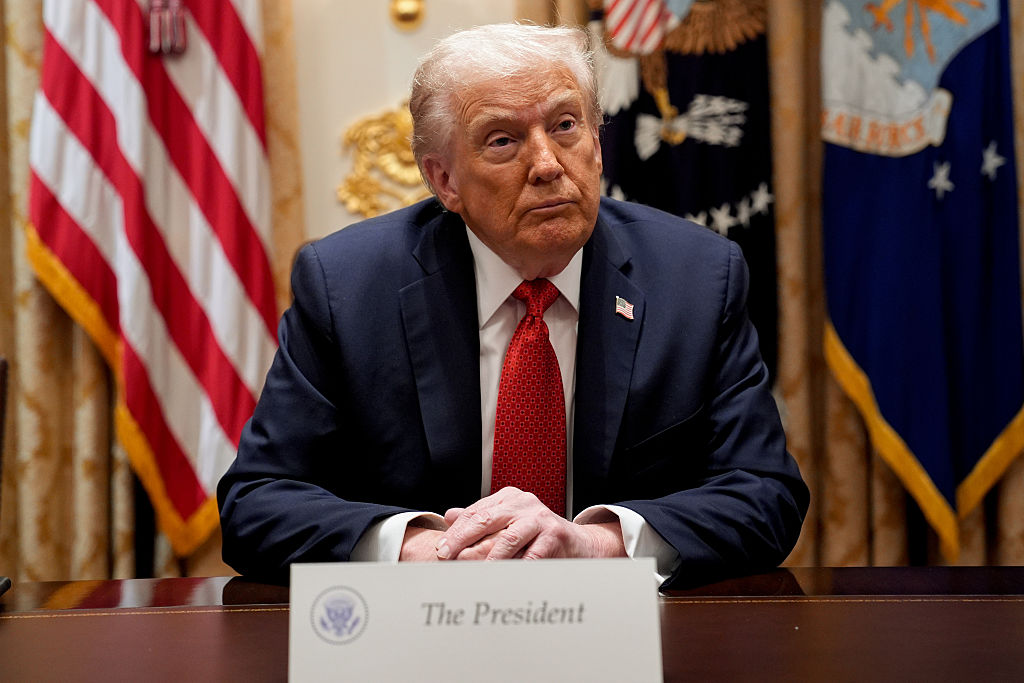President Donald Trump is doubling down on his intention to deploy National Guard troops to San Francisco, claiming that people in the city “want” it.
“We’re going to go to San Francisco—the difference is I think they want us in San Francisco,” he said on the Fox News program “Sunday Morning Futures,” which aired over the weekend.
[time-brightcove not-tgx=”true”]
“San Francisco was truly one of the great cities of the world, and then 15 years ago it went wrong—it went woke,” Trump continued. “We’re going to go to San Francisco, and we’re going to make it great.”
The President has deployed or suggested deploying federal troops to several other cities since returning to office in January.
He hasn’t yet sent troops to San Francisco during either of his terms, and California officials are pushing back on the idea of a potential deployment there now. The National Guard has previously been deployed in the Northern California city multiple times, including once under the state’s current governor, Gavin Newsom. But if the President follows through on his stated intention, he would likely be breaking with those past instances by sending in the Guard against local officials’ wishes.
Here’s what to know about Trump’s latest remarks about San Francisco and the past National Guard deployments in the city.
How are local officials responding to Trump’s remarks?
Trump’s recent comments about deploying troops to San Francisco generated backlash from California officials. On Sunday, Newsom posted on X, “Fact check: Nobody wants you here. You will ruin one of America’s greatest cities.” Last week, former House Speaker Nancy Pelosi also pushed back on Trump’s previous claims about the city.
“San Francisco does not want or need Donald Trump’s chaos,” she said in a statement. “Our City takes great pride in the steps we’ve taken to significantly increase public safety and reduce crime in partnership with community and state officials—without the interference of a President seeking headlines.”
Trump has already sent the National Guard to California this year: Over the summer, he deployed troops to Los Angeles, after protests over immigration raids broke out in the city. Local officials, including Newsom, condemned the President’s actions. Last month, a federal judge ruled that the deployment violated a longstanding federal law.
What does data reveal about crime in San Francisco?
Earlier this month, Trump called San Francisco a “mess,” and suggested that he would deploy troops there. He has made similar comments about a number of other cities led by Democrats, including Memphis and Portland, claiming that they aren’t safe.
Data show that crime in San Francisco, as in a number of other U.S. cities, has already been dropping. Overall crime in the city has gone down about 26% so far this year compared to the same period in 2024, according to city police data. Homicides, for instance, have dropped by about 12%, and rapes have gone down by nearly 17%. Robberies and burglaries have gone down about 23% and 28%, respectively. Mayor Daniel Lurie said in a statement last week that crime is “at its lowest point in decades,” with homicides at 70-year lows.
Marc Benioff, the founder of the tech company Salesforce and co-chair and owner of TIME, sparked controversy when he said earlier this month that he believed the President should send federal troops to the city to help combat crime. He has since apologized for those comments.
“I do not believe the National Guard is needed to address safety in San Francisco,” he said on X on Friday. “I sincerely apologize for the concern it caused.”
When have troops been deployed to San Francisco in the past?
National Guard troops have been deployed to the Northern California city several times over the years—but at the request of or with the approval of local leaders.
In April 1906, an earthquake struck San Francisco, sparking a series of fires that destroyed more than 500 blocks in the center of the city. At the request of the then-mayor, troops who were stationed in the city responded to the crisis, though the deployment sparked controversy, particularly over troops’ use of force against suspected looters.
Nearly three decades later, troops were deployed to the city again when waterfront workers went on strike. Riots broke out as the workers on strike clashed with local law enforcement. Two people were killed by officers and more than 100 others were wounded. The California governor at the time requested the National Guard.
On Sept. 27, 1966, a white San Francisco police officer shot and killed Matthew Johnson, an unarmed Black teenager who was fleeing from the site of a car theft. Protests broke out in response to the shooting, and the then-governor deployed the National Guard for several days in response to the unrest.
In 1989, the Loma Prieta earthquake struck the Bay Area, killing dozens of people and injuring thousands. The National Guard was deployed to assist in emergency response and recovery efforts.
In 2023, Newsom authorized California National Guard troops to participate in a new multi-agency operation to tackle fentanyl trafficking in San Francisco. His office said that California National Guard service members would “support the analysis of drug trafficking operations, with a particular focus on disrupting and dismantling fentanyl rings in the region that contribute to the ongoing public safety and public health crisis.” Newsom also authorized service members to help local law enforcement officers “with administrative non-patrol tasks to improve law enforcement’s ability to address pressing crime-fighting efforts” related to the fentanyl operation.

